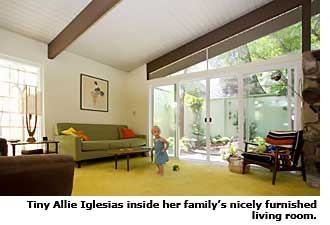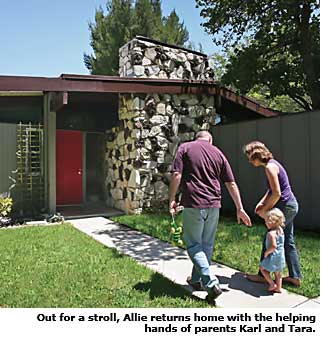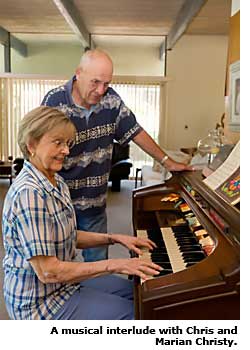'Living Conditioned' Homes of Northridge - Los Angeles - Page 2
Tiki gods aren't the Nolands' only ammunition in their fight to preserve their neighborhood. They are also backed by Los Angeles preservationist Adriene Biondo, who is helping the Nolands prepare a nomination to landmark their house.
Biondo cites the neighborhood as one "of the most distinctive mid-century modern tracts in the entire San Fernando Valley," and the "only San Fernando Valley Palmer & Krisel tract designed in the iconic Palm Springs 'Alexander style,' with butterfly roofs and decorative use of cinder block." The Alexanders were developers who worked with the architectural firm on neighborhoods in the valley and Palm Springs.
Also in the Nolands' corner are such newcomers as Karl and Tara Iglesias, who moved into the neighborhood in fall 2009. Their story much resembles that of Mark and Gemma—with the important difference that they did not come to the neighborhood as committed fans of modernism.
The Iglesiases, who were moving from an apartment in Sherman Oaks, weren't looking for something 'modern,' but were impressed by the tall ceilings and spaciousness of a 'Living Conditioned' home.
"We really fell in love with it," says Karl, a screenwriter and author, "as opposed to, 'this is a work of art and we have to own it.' "
"This is a work of art," says Tara, a psychologist.
But at first, it looked like just another house that would get way. They'd already put in offers on a dozen homes. "People were overbidding like crazy," Tara says.

The owner, a recent widow, was a Japanese war bride who wanted to return to Japan. They loved the Japanese garden she'd created in the home's front courtyard, they admired the home's mid-century furnishings, and they liked her.
"I think we connected with her on an emotional level," Karl says. "I think she saw we were really genuine and we really loved the house...We saw it like a museum. We wanted to keep it how it is."
Tara knew they were doomed at the open house when their broker spotted Craig Terrien, a well-known valley broker who specializes in mid-century modern, visiting the home with his client. "Our realtor said, 'It's over,'" Tara recalls.

Instead, the Iglesiases won with a bid that was $30,000 below the highest. A neighbor told them it was because the seller liked their young daughter. It's not surprising that Tikis show up in some houses, or that old-timers find some newcomers simpatico.
Vanessa Brown, who grew up in a 'Living Conditioned' house with a fire-spouting, Tiki-themed volcano installed poolside, remembers when kids ran from yard to yard to jump in their pool. This was before tall fences were built.
She also remembers the parent parties, with furniture hauled out of rooms to create dance floors. "My goal when I was young," she says, "was to be old enough to go to those parties."
Today the neighborhood, which fills portions of several streets near the intersection of Reseda Boulevard and Devonshire Street, remains a relatively quiet spot, though Reseda is a major through-route to the freeway. Shopping centers occupy the intersection. A McDonald's by one entry to the neighborhood causes some problems, including trash dumped by messy patrons, and traffic.

But neighbors stand up for their interests. Bruce Madden, a longtime resident, helped convince the city to install speed bumps on the affected road. And about McDonald's litter, neighbor Chris Christy says, "We got to know the owners and they do a good job picking it up."
The 'Living Conditioned' homes butt up against more conventional ranch houses that were built a few years later. That's because Adler, the 'Living Conditioned' builder, hit hard times during the recession of 1958. "The bank was selling the properties," says Christy, an original owner, who says his home "sat in semi-finished condition for almost a year."
It was a remote area then, longtime owner Alex Carrillo remembers. Reseda Boulevard was lined with huge pepper trees, and the fields were filled with pumpkins. "It moved very rapidly from a place that was very rural to a place that was a small community," he says.
Homes, priced originally from $24,750, featured "five different floor plans and 17 unique exterior stylings," the developer proclaimed.
What did Adler mean by 'Living Conditioned'?




